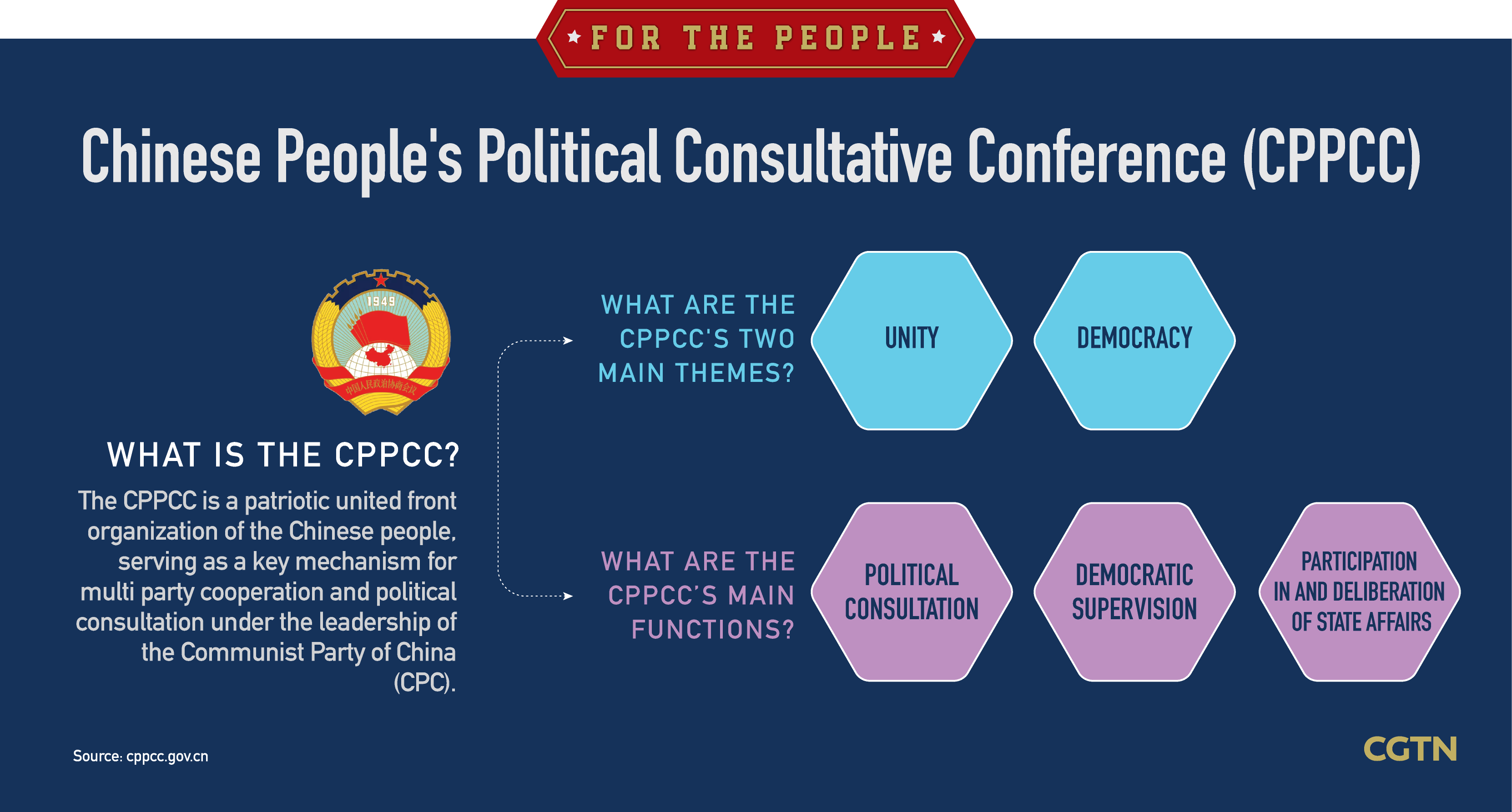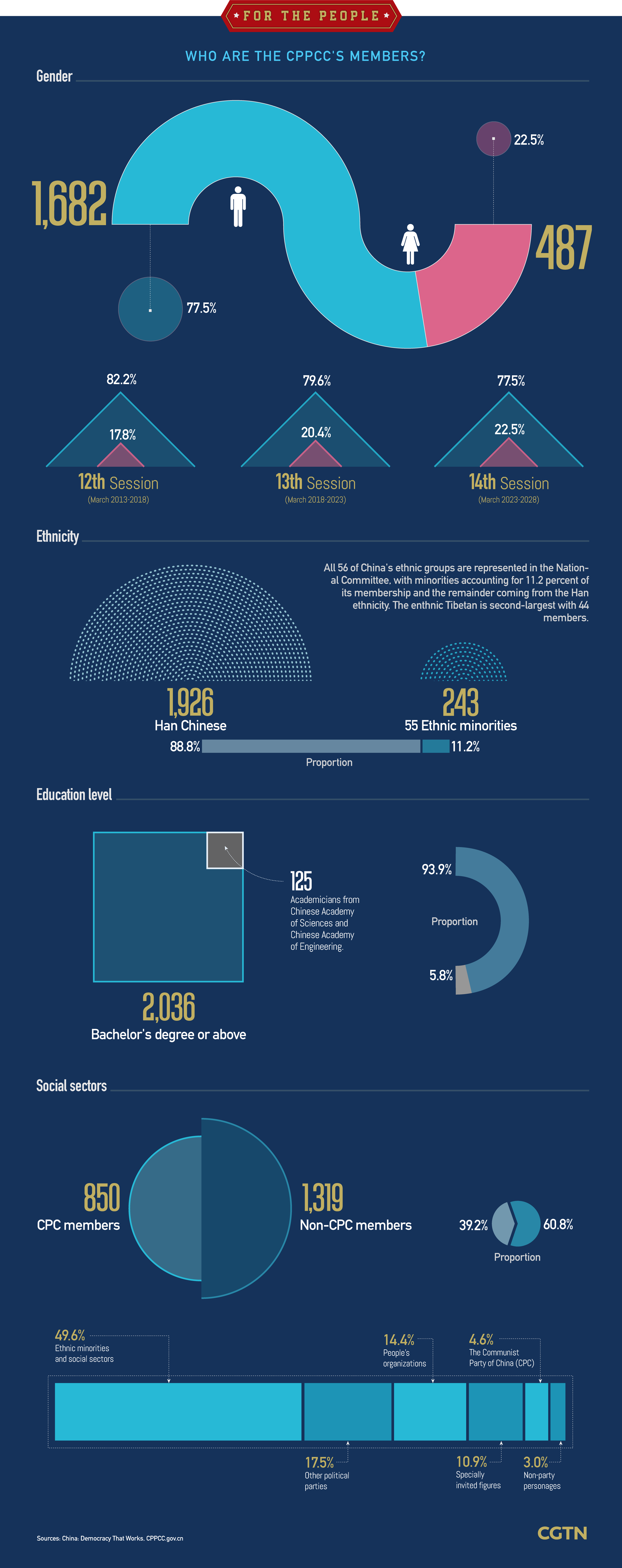The political party system, according to China's Constitution, is a multiparty cooperation and political consultation under the leadership of the Communist Party of China (CPC).
The CPPCC – Chinese People's Political Consultative Conference – serves as a key element of the multiparty mechanism. It is neither a body of state power nor a legislature.

Through the institutions of the CPPCC, representatives from all political parties, people's organizations, ethnic groups and social sectors engage in political consultation. They carry out their routine duties through mechanisms such as plenary sessions, meetings, forums on specific subjects, and consultative seminars, and make proposals, conduct inspections and field surveys, and report on social conditions and public opinions on a regular basis.
The CPC collects these opinions and suggestions and adopts those which are sound, while the other participants accept the CPC's propositions and promote its guidelines and policies. In doing so, they increase trust and dispel doubts, convey the will of the people and draw on their wisdom, and build the broadest consensus, so as to form a shared ideological foundation for collective endeavors.

The CPPCC National Committee includes members of the CPC and other political parties and people's organizations, representatives of ethnic groups and various social sectors, compatriots from the Hong Kong and Macao special administrative regions, Taiwan region, and returned overseas Chinese, and non-party personages. This reflects the distinctive features and strengths of China's socialist democracy – problems are solved through consultation.
The current CPPCC National Committee, whose 14th five-year term began in 2023, is composed of 2,169 members, 60.8 percent of whom are not CPC members. All 56 of China's ethnic groups are represented in the National Committee, with minorities accounting for 11.2 percent of its membership and the remainder coming from the Han ethnicity. The ethnic Tibetan is second-largest with 44 members.
(Data edited by Sun Yiwen; graphics designed by Mukesh Mohanan)